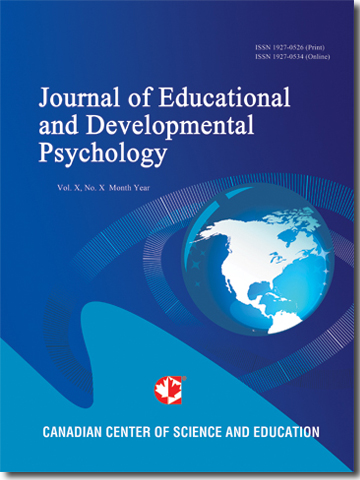Subclinical ADHD-Symptoms Are Associated with Executive-Functioning and Externalizing Problems in College Students without ADHD-Diagnoses
- Allen Brown
- Beth Casey
Abstract
This study investigated whether problem behaviors, typically associated with a clinical diagnosis of ADHD, would also be associated with subclinical ADHD symptoms within a non-clinical college sample. These are symptoms characteristic of ADHD, which are insufficient to warrant a DSM-IV diagnosis of ADHD. Self-ratings of behaviors known to be comorbid with ADHD (Oppositional-Defiant Disorder (ODD) behaviors, risk-taking, and Executive-Functioning (EF) problems) were examined as predictors of self-ratings of ADHD symptoms. Measures of ODD symptoms, risk-taking, and EF behavioral problems (related to poor management of time) significantly predicted ADHD symptoms, as measured by Barkley’s ADHD Combined Subscale. These predictors accounted for 26% of the variance. The same measures predicted symptoms of ADHD, Inattentive type, as measured by Barkley’s Inattentiveness (IA) Subscale, and accounted for 30% of the variance. For the Hyperactivity-Impulsivity Subscale (HI), the ODD measure significantly entered the equation, while the other two measures were borderline significant, accounting altogether for 10% of the variance. As hypothesized, the EF measure was the strongest predictor for IA, and the ODD measure was the strongest predictor for HI. In conclusion, problem behaviors comorbid with a formal clinical ADHD diagnosis were found to be significantly associated with subclinical ADHD symptoms within a non-clinical sample of college students, as indicated by the substantial proportion of the variance they accounted for in predicting the Barkley’s’ Combined and Inattentiveness Subscales, and to a lessor extent for the Hyperactivity/Impulsivity Subscale. This indicates that college students with ADHD symptoms may have substantial problems not only with their ADHD symptoms, but also with executive functioning and externalizing behaviors associated with these symptoms.
- Full Text:
 PDF
PDF
- DOI:10.5539/jedp.v6n1p204
Journal Metrics
(The data was calculated based on Google Scholar Citations)
1. Google-based Impact Factor (2021): 1.11
2. h-index (December 2021): 29
3. i10-index (December 2021): 87
4. h5-index (December 2021): N/A
5. h5-median (December 2021): N/A
Index
- Academic Journals Database
- CNKI Scholar
- Copyright Clearance Center
- CrossRef
- Elektronische Zeitschriftenbibliothek (EZB)
- EuroPub Database
- Excellence in Research for Australia (ERA)
- Harvard Library
- Jisc Library Hub Discover
- JournalSeek
- JournalTOCs
- LIVIVO (ZB MED)
- LOCKSS
- MIAR
- Open Access Journals Search Engine(OAJSE)
- PKP Open Archives Harvester
- Publons
- ROAD
- Scilit
- SHERPA/RoMEO
- Standard Periodical Directory
- Stanford Libraries
- Technische Informationsbibliothek (TIB)
- UCR Library
- UoB Library
- WorldCat
- Zeitschriften Daten Bank (ZDB)
Contact
- Carol WongEditorial Assistant
- jedp@ccsenet.org
